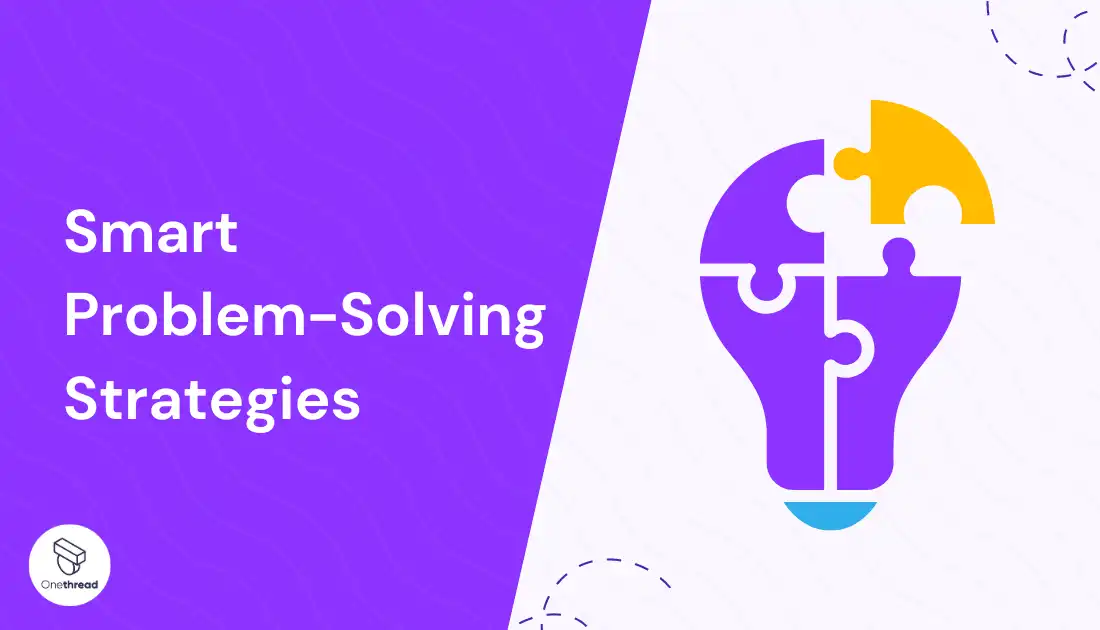Struggling to overcome challenges in your life? We all face problems, big and small, on a regular basis.
So how do you tackle them effectively? What are some key problem-solving strategies and skills that can guide you?
Effective problem-solving requires breaking issues down logically, generating solutions creatively, weighing choices critically, and adapting plans flexibly based on outcomes. Useful strategies range from leveraging past solutions that have worked to visualizing problems through diagrams. Core skills include analytical abilities, innovative thinking, and collaboration.
Want to improve your problem-solving skills? Keep reading to find out 17 effective problem-solving strategies, key skills, common obstacles to watch for, and tips on improving your overall problem-solving skills.
Key Takeaways:
- Effective problem-solving requires breaking down issues logically, generating multiple solutions creatively, weighing choices critically, and adapting plans based on outcomes.
- Useful problem-solving strategies range from leveraging past solutions to brainstorming with groups to visualizing problems through diagrams and models.
- Core skills include analytical abilities, innovative thinking, decision-making, and team collaboration to solve problems.
- Common obstacles include fear of failure, information gaps, fixed mindsets, confirmation bias, and groupthink.
- Boosting problem-solving skills involves learning from experts, actively practicing, soliciting feedback, and analyzing others’ success.
- Onethread’s project management capabilities align with effective problem-solving tenets – facilitating structured solutions, tracking progress, and capturing lessons learned.
What Is Problem-Solving?
Problem-solving is the process of understanding an issue, situation, or challenge that needs to be addressed and then systematically working through possible solutions to arrive at the best outcome.
It involves critical thinking, analysis, logic, creativity, research, planning, reflection, and patience in order to overcome obstacles and find effective answers to complex questions or problems.
The ultimate goal is to implement the chosen solution successfully.
What Are Problem-Solving Strategies?
Problem-solving strategies are like frameworks or methodologies that help us solve tricky puzzles or problems we face in the workplace, at home, or with friends.
Imagine you have a big jigsaw puzzle. One strategy might be to start with the corner pieces. Another could be looking for pieces with the same colors.
Just like in puzzles, in real life, we use different plans or steps to find solutions to problems. These strategies help us think clearly, make good choices, and find the best answers without getting too stressed or giving up.
Why Is It Important To Know Different Problem-Solving Strategies?
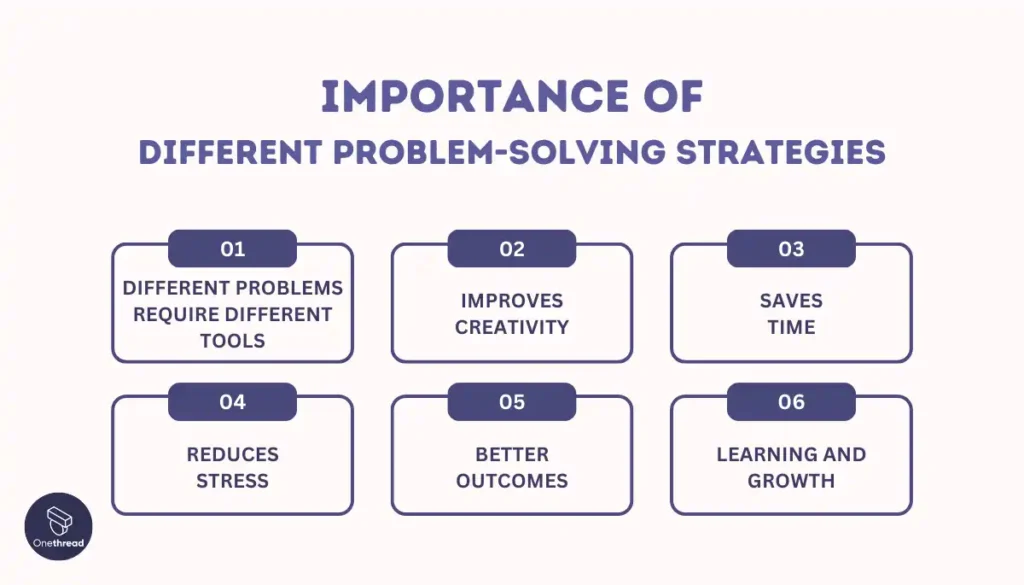
Knowing different problem-solving strategies is important because different types of problems often require different approaches to solve them effectively. Having a variety of strategies to choose from allows you to select the best method for the specific problem you are trying to solve.
This improves your ability to analyze issues thoroughly, develop solutions creatively, and tackle problems from multiple angles. Knowing multiple strategies also aids in overcoming roadblocks if your initial approach is not working.
Here are some reasons why you need to know different problem-solving strategies:
- Different Problems Require Different Tools: Just like you can’t use a hammer to fix everything, some problems need specific strategies to solve them.
- Improves Creativity: Knowing various strategies helps you think outside the box and come up with creative solutions.
- Saves Time: With the right strategy, you can solve problems faster instead of trying things that don’t work.
- Reduces Stress: When you know how to tackle a problem, it feels less scary and you feel more confident.
- Better Outcomes: Using the right strategy can lead to better solutions, making things work out better in the end.
- Learning and Growth: Each time you solve a problem, you learn something new, which makes you smarter and better at solving future problems.
Knowing different ways to solve problems helps you tackle anything that comes your way, making life a bit easier and more fun!
17 Effective Problem-Solving Strategies
Effective problem-solving strategies include breaking the problem into smaller parts, brainstorming multiple solutions, evaluating the pros and cons of each, and choosing the most viable option.
Critical thinking and creativity are essential in developing innovative solutions. Tools like graphing calculators can help analyze complex problems efficiently. Collaboration with others also provides diverse perspectives and ideas.
By applying these strategies, you can tackle complex issues more effectively.
Now, consider a challenge you’re dealing with. Which strategy could help you find a solution? Here we will discuss key problem strategies in detail.
1. Use a Past Solution That Worked
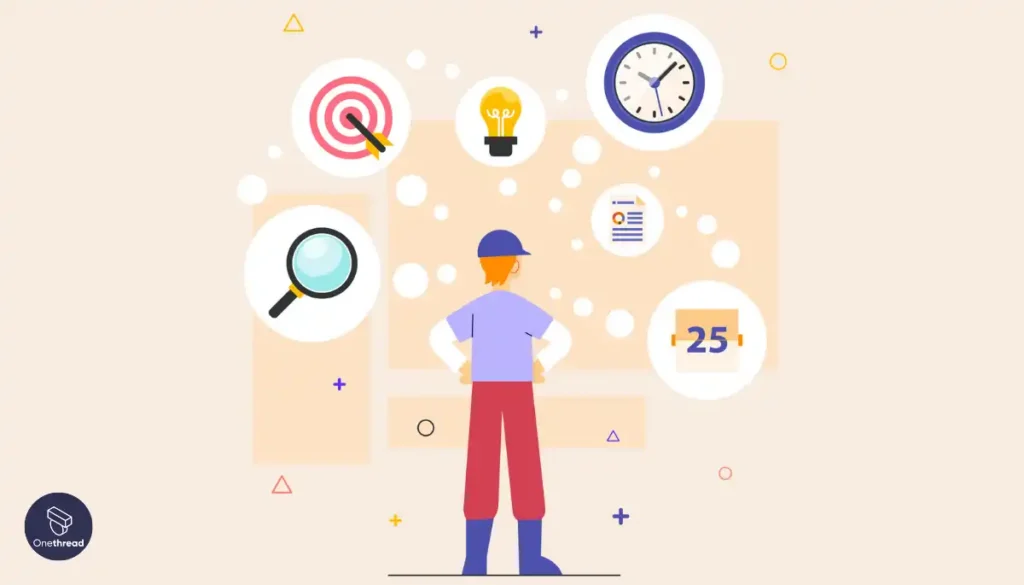
This strategy involves looking back at previous similar problems you have faced and the solutions that were effective in solving them.
It is useful when you are facing a problem that is very similar to something you have already solved. The main benefit is that you don’t have to come up with a brand new solution – you already know the method that worked before will likely work again.
However, the limitation is that the current problem may have some unique aspects or differences that mean your old solution is not fully applicable.
The ideal process is to thoroughly analyze the new challenge, identify the key similarities and differences versus the past case, adapt the old solution as needed to align with the current context, and then pilot it carefully before full implementation.
An example is using the same negotiation tactics from purchasing your previous home when putting in an offer on a new house. Key terms would be adjusted but overall it can save significant time versus developing a brand new strategy.
2. Brainstorm Solutions
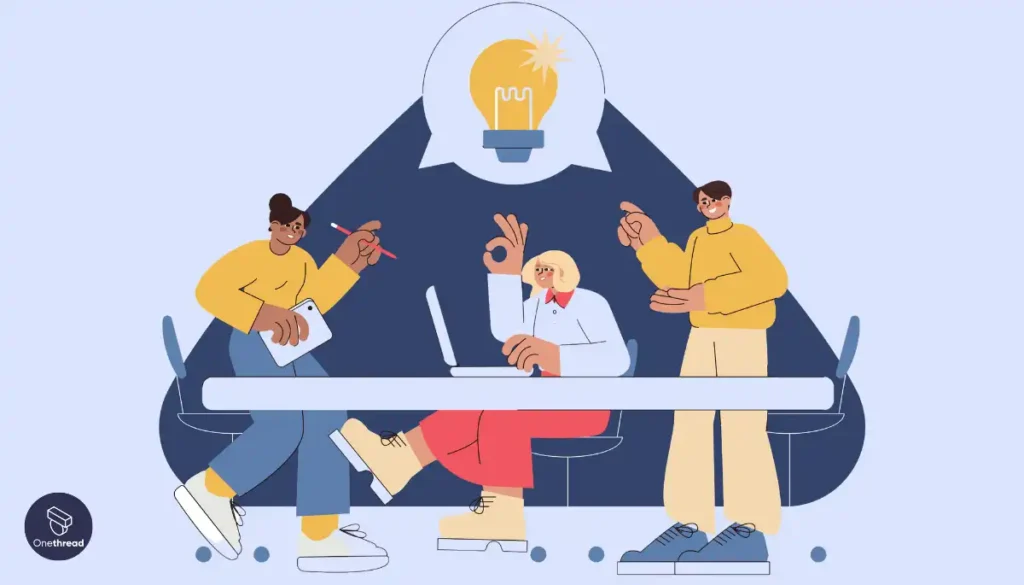
This involves gathering a group of people together to generate as many potential solutions to a problem as possible.
It is effective when you need creative ideas to solve a complex or challenging issue. By getting input from multiple people with diverse perspectives, you increase the likelihood of finding an innovative solution.
The main limitation is that brainstorming sessions can sometimes turn into unproductive gripe sessions or discussions rather than focusing on productive ideation —so they need to be properly facilitated.
The key to an effective brainstorming session is setting some basic ground rules upfront and having an experienced facilitator guide the discussion. Rules often include encouraging wild ideas, avoiding criticism of ideas during the ideation phase, and building on others’ ideas.
For instance, a struggling startup might hold a session where ideas for turnaround plans are generated and then formalized with financials and metrics.
3. Work Backward from the Solution
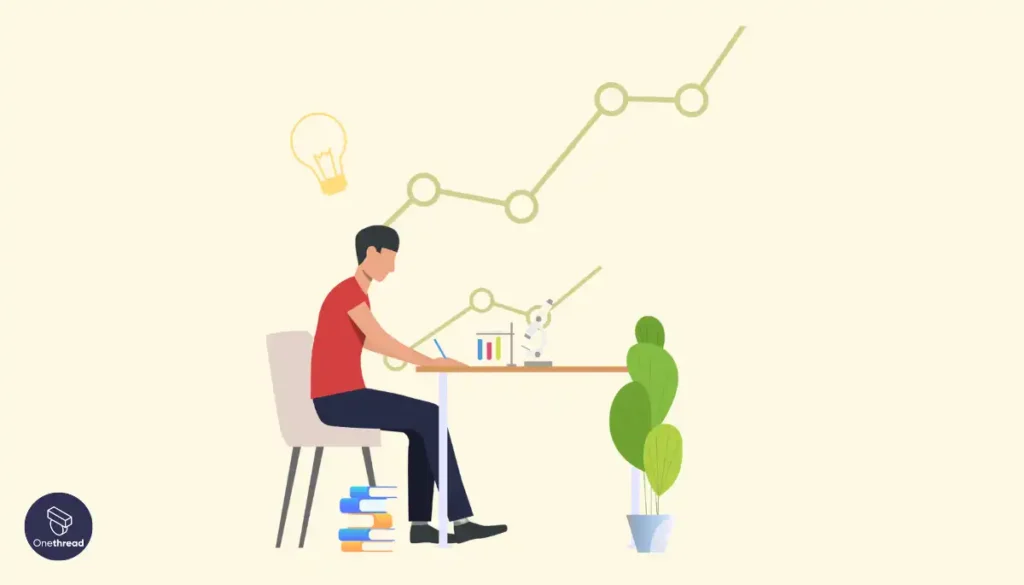
This technique involves envisioning that the problem has already been solved and then working step-by-step backward toward the current state.
This strategy is particularly helpful for long-term, multi-step problems. By starting from the imagined solution and identifying all the steps required to reach it, you can systematically determine the actions needed. It lets you tackle a big hairy problem through smaller, reversible steps.
A limitation is that this approach may not be possible if you cannot accurately envision the solution state to start with.
The approach helps drive logical systematic thinking for complex problem-solving, but should still be combined with creative brainstorming of alternative scenarios and solutions.
An example is planning for an event – you would imagine the successful event occurring, then determine the tasks needed the week before, two weeks before, etc. all the way back to the present.
4. Use the Kipling Method
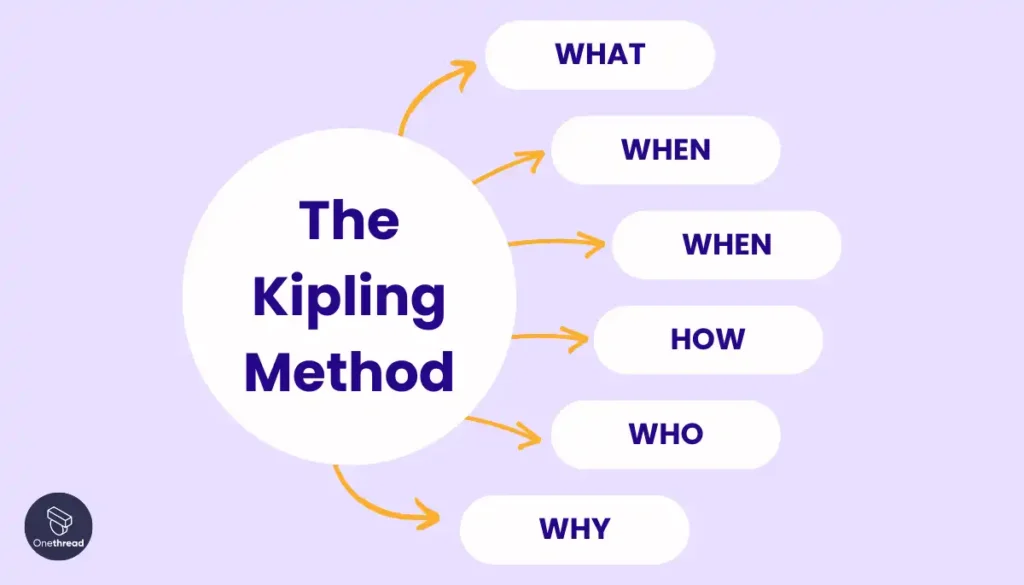
This method, named after author Rudyard Kipling, provides a framework for thoroughly analyzing a problem before jumping into solutions.
It consists of answering six fundamental questions: What, Where, When, How, Who, and Why about the challenge. Clearly defining these core elements of the problem sets the stage for generating targeted solutions.
The Kipling method enables a deep understanding of problem parameters and root causes before solution identification. By jumping to brainstorm solutions too early, critical information can be missed or the problem is loosely defined, reducing solution quality.
Answering the six fundamental questions illuminates all angles of the issue. This takes time but pays dividends in generating optimal solutions later tuned precisely to the true underlying problem.
The limitation is that meticulously working through numerous questions before addressing solutions can slow progress.
The best approach blends structured problem decomposition techniques like the Kipling method with spurring innovative solution ideation from a diverse team.
An example is using this technique after a technical process failure – the team would systematically detail What failed, Where/When did it fail, How it failed (sequence of events), Who was involved, and Why it likely failed before exploring preventative solutions.
5. Try Different Solutions Until One Works (Trial and Error)
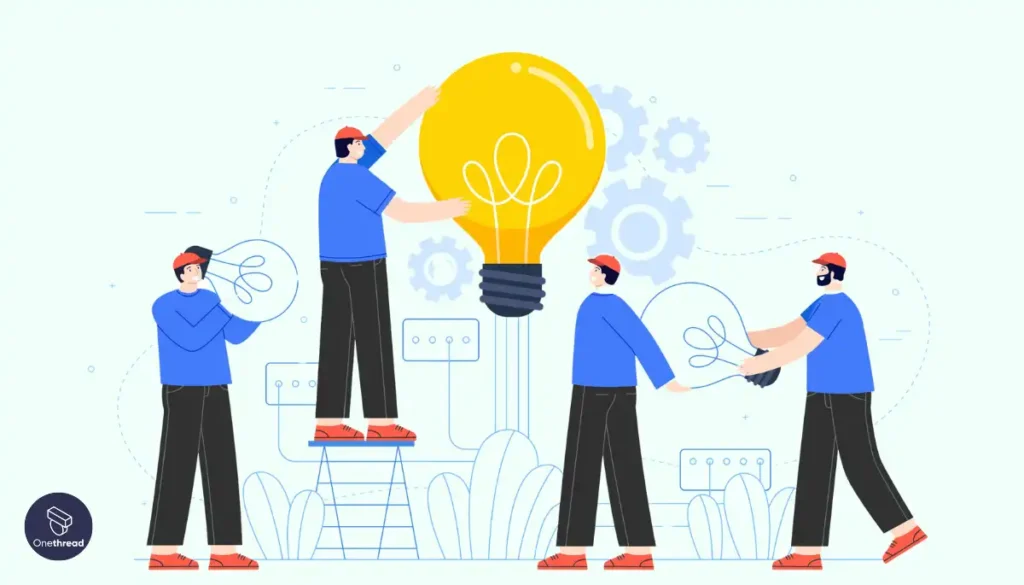
This technique involves attempting various potential solutions sequentially until finding one that successfully solves the problem.
Trial and error works best when facing a concrete, bounded challenge with clear solution criteria and a small number of discrete options to try. By methodically testing solutions, you can determine the faulty component.
A limitation is that it can be time-intensive if the working solution set is large.
The key is limiting the variable set first. For technical problems, this boundary is inherent and each element can be iteratively tested. But for business issues, artificial constraints may be required – setting decision rules upfront to reduce options before testing.
Furthermore, hypothesis-driven experimentation is far superior to blind trial and error – have logic for why Option A may outperform Option B.
Examples include fixing printer jams by testing different paper tray and cable configurations or resolving website errors by tweaking CSS/HTML line-by-line until the code functions properly.
6. Use Proven Formulas or Frameworks (Heuristics)
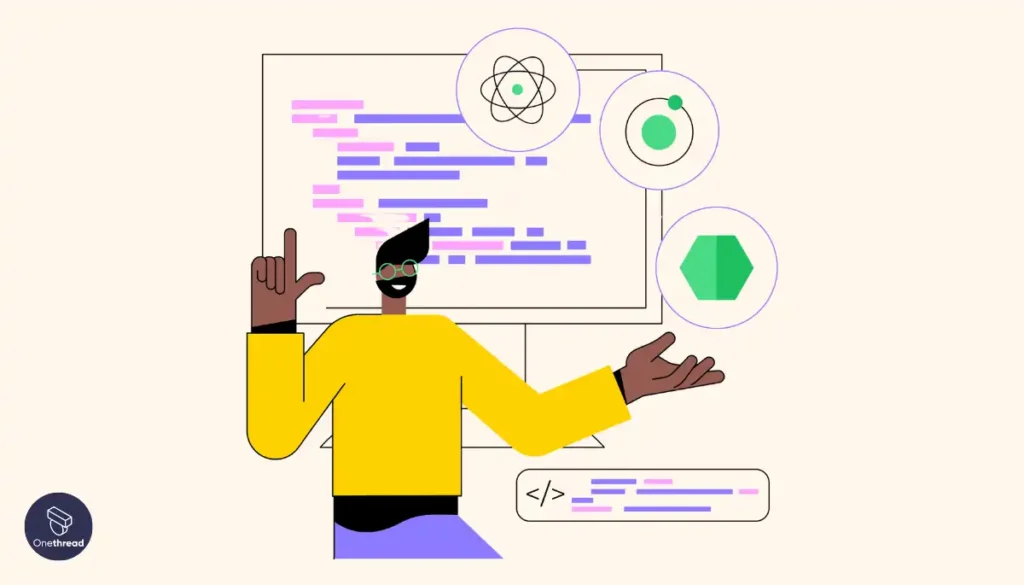
Heuristics refers to applying existing problem-solving formulas or frameworks rather than addressing issues completely from scratch.
This allows leveraging established best practices rather than reinventing the wheel each time.
It is effective when facing recurrent, common challenges where proven structured approaches exist.
However, heuristics may force-fit solutions to non-standard problems.
For example, a cost-benefit analysis can be used instead of custom weighting schemes to analyze potential process improvements.
Onethread allows teams to define, save, and replicate configurable project templates so proven workflows can be reliably applied across problems with some consistency rather than fully custom one-off approaches each time.
Try Onethread
Experience Onethread full potential, with all its features unlocked. Sign up now to start your 14-day free trial!
7. Trust Your Instincts (Insight Problem-Solving)
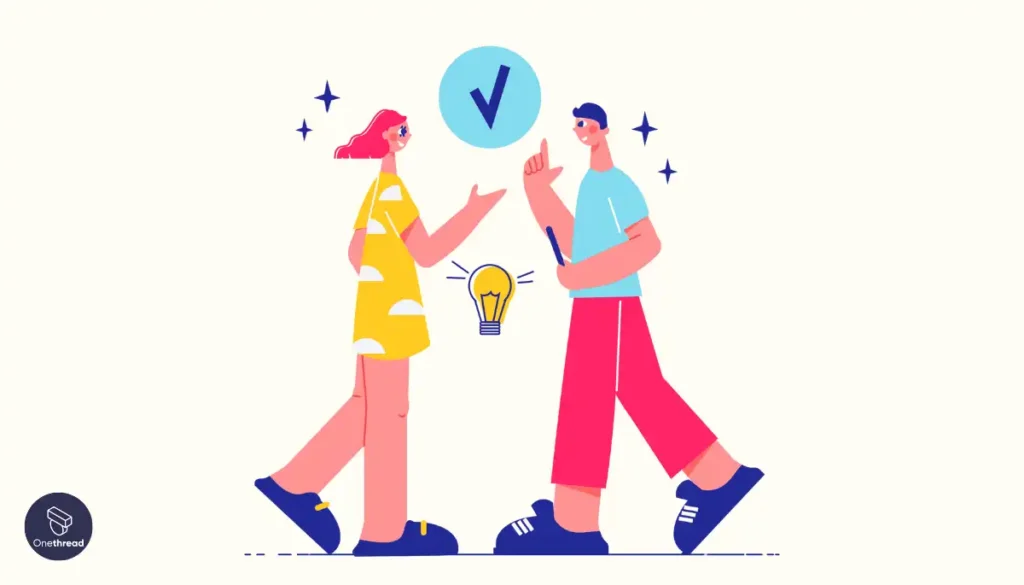
Insight is a problem-solving technique that involves waiting patiently for an unexpected “aha moment” when the solution pops into your mind.
It works well for personal challenges that require intuitive realizations over calculated logic. The unconscious mind makes connections leading to flashes of insight when relaxing or doing mundane tasks unrelated to the actual problem.
Benefits include out-of-the-box creative solutions. However, the limitations are that insights can’t be forced and may never come at all if too complex. Critical analysis is still required after initial insights.
A real-life example would be a writer struggling with how to end a novel. Despite extensive brainstorming, they feel stuck. Eventually while gardening one day, a perfect unexpected plot twist sparks an ideal conclusion. However, once written they still carefully review if the ending flows logically from the rest of the story.
8. Reverse Engineer the Problem
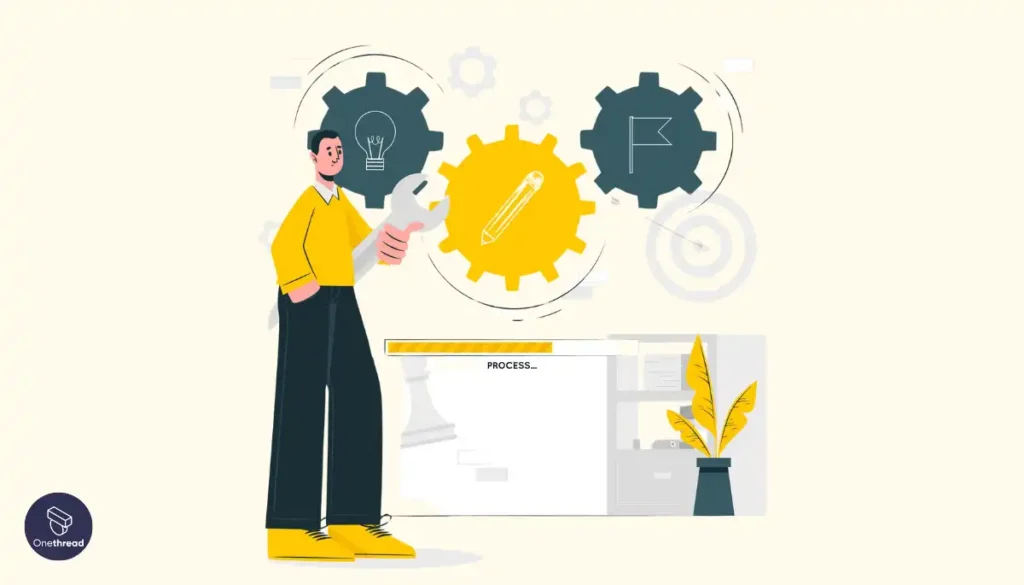
This approach involves deconstructing a problem in reverse sequential order from the current undesirable outcome back to the initial root causes.
By mapping the chain of events backward, you can identify the origin of where things went wrong and establish the critical junctures for solving it moving ahead. Reverse engineering provides diagnostic clarity on multi-step problems.
However, the limitation is that it focuses heavily on autopsying the past versus innovating improved future solutions.
An example is tracing back from a server outage, through the cascade of infrastructure failures that led to it finally terminating at the initial script error that triggered the crisis. This root cause would then inform the preventative measure.
9. Break Down Obstacles Between Current and Goal State (Means-End Analysis)
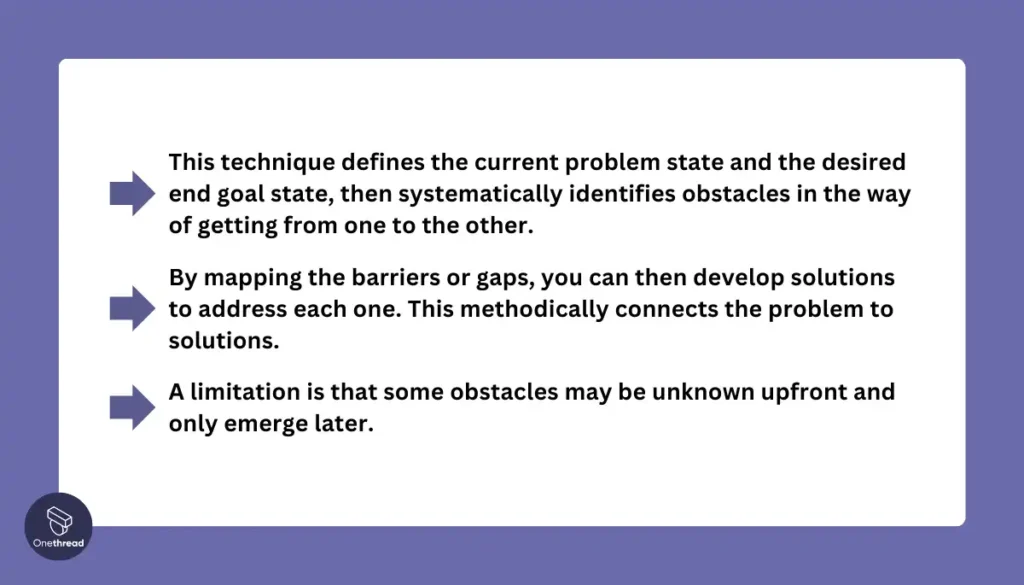
This technique defines the current problem state and the desired end goal state, then systematically identifies obstacles in the way of getting from one to the other.
By mapping the barriers or gaps, you can then develop solutions to address each one. This methodically connects the problem to solutions.
A limitation is that some obstacles may be unknown upfront and only emerge later.
For example, you can list down all the steps required for a new product launch – current state through production, marketing, sales, distribution, etc. to full launch (goal state) – to highlight where resource constraints or other blocks exist so they can be addressed.
Onethread allows dividing big-picture projects into discrete, manageable phases, milestones, and tasks to simplify execution just as problems can be decomposed into more achievable components. Features like dependency mapping further reinforce interconnections.
Using Onethread’s issues and subtasks feature, messy problems can be decomposed into manageable chunks.
Try Onethread
Experience Onethread full potential, with all its features unlocked. Sign up now to start your 14-day free trial!
10. Ask “Why” Five Times to Identify the Root Cause (The 5 Whys)
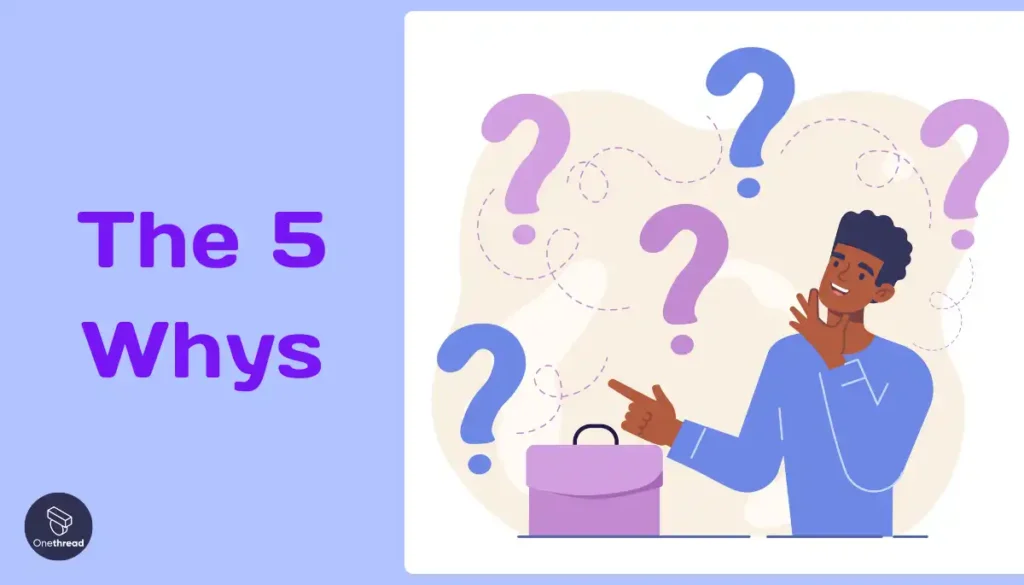
This technique involves asking “Why did this problem occur?” and then responding with an answer that is again met with asking “Why?” This process repeats five times until the root cause is revealed.
Continually asking why digs deeper from surface symptoms to underlying systemic issues.
It is effective for getting to the source of problems originating from human error or process breakdowns.
However, some complex issues may have multiple tangled root causes not solvable through this approach alone.
An example is a retail store experiencing a sudden decline in customers. Successively asking why five times may trace an initial drop to parking challenges, stemming from a city construction project – the true starting point to address.
11. Evaluate Strengths, Weaknesses, Opportunities, and Threats (SWOT Analysis)
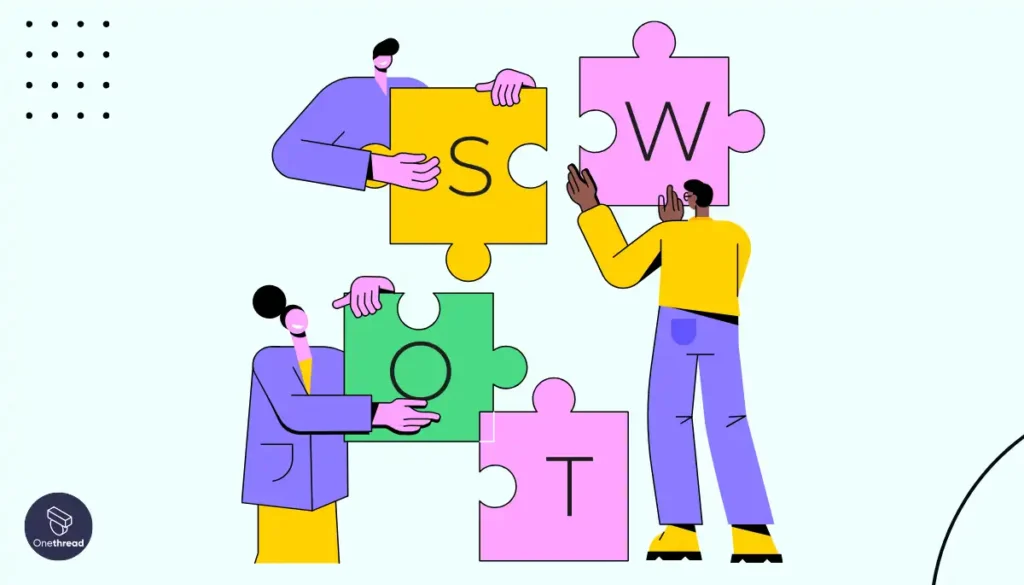
This involves analyzing a problem or proposed solution by categorizing internal and external factors into a 2×2 matrix: Strengths, Weaknesses as the internal rows; Opportunities and Threats as the external columns.
Systematically identifying these elements provides balanced insight to evaluate options and risks. It is impactful when evaluating alternative solutions or developing strategy amid complexity or uncertainty.
The key benefit of SWOT analysis is enabling multi-dimensional thinking when rationally evaluating options. Rather than getting anchored on just the upsides or the existing way of operating, it urges a systematic assessment through four different lenses:
- Internal Strengths: Our core competencies/advantages able to deliver success
- Internal Weaknesses: Gaps/vulnerabilities we need to manage
- External Opportunities: Ways we can differentiate/drive additional value
- External Threats: Risks we must navigate or mitigate
Multiperspective analysis provides the needed holistic view of the balanced risk vs. reward equation for strategic decision making amid uncertainty.
However, SWOT can feel restrictive if not tailored and evolved for different issue types.
Teams should view SWOT analysis as a starting point, augmenting it further for distinct scenarios.
An example is performing a SWOT analysis on whether a small business should expand into a new market – evaluating internal capabilities to execute vs. risks in the external competitive and demand environment to inform the growth decision with eyes wide open.
12. Compare Current vs Expected Performance (Gap Analysis)
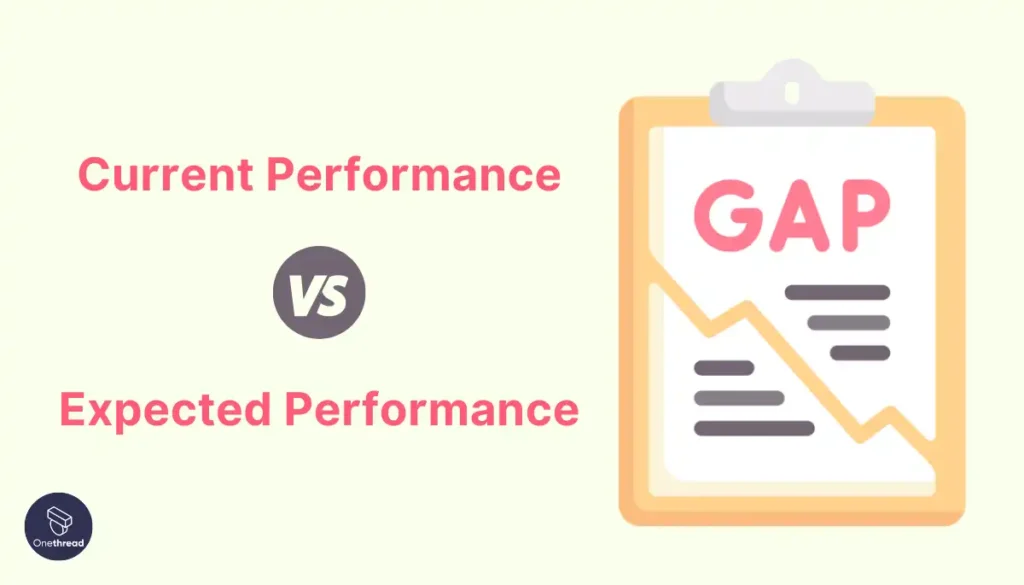
This technique involves comparing the current state of performance, output, or results to the desired or expected levels to highlight shortfalls.
By quantifying the gaps, you can identify problem areas and prioritize address solutions.
Gap analysis is based on the simple principle – “you can’t improve what you don’t measure.” It enables facts-driven problem diagnosis by highlighting delta to goals, not just vague dissatisfaction that something seems wrong. And measurement immediately suggests improvement opportunities – address the biggest gaps first.
This data orientation also supports ROI analysis on fixing issues – the return from closing larger gaps outweighs narrowly targeting smaller performance deficiencies.
However, the approach is only effective if robust standards and metrics exist as the benchmark to evaluate against. Organizations should invest upfront in establishing performance frameworks.
Furthermore, while numbers are invaluable, the human context behind problems should not be ignored – quantitative versus qualitative gap assessment is optimally blended.
For example, if usage declines are noted during software gap analysis, this could be used as a signal to improve user experience through design.
13. Observe Processes from the Frontline (Gemba Walk)
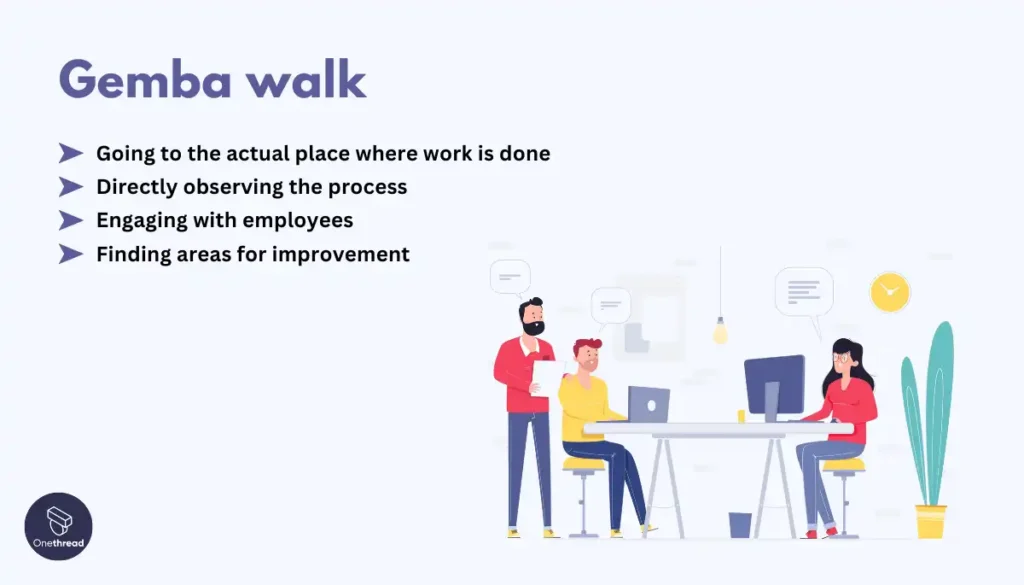
A Gemba walk involves going to the actual place where work is done, directly observing the process, engaging with employees, and finding areas for improvement.
By experiencing firsthand rather than solely reviewing abstract reports, practical problems and ideas emerge.
The limitation is Gemba walks provide anecdotes not statistically significant data. It complements but does not replace comprehensive performance measurement.
An example is a factory manager inspecting the production line to spot jam areas based on direct reality rather than relying on throughput dashboards alone back in her office. Frontline insights prove invaluable.
14. Analyze Competitive Forces (Porter’s Five Forces)
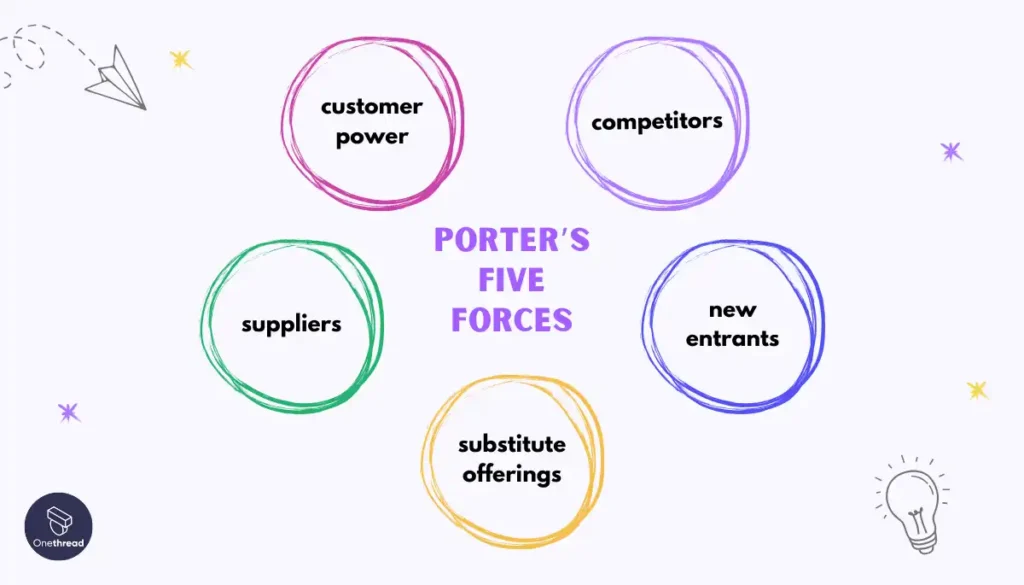
This involves assessing the marketplace around a problem or business situation via five key factors: competitors, new entrants, substitute offerings, suppliers, and customer power.
Evaluating these forces illuminates risks and opportunities for strategy development and issue resolution. It is effective for understanding dynamic external threats and opportunities when operating in a contested space.
However, over-indexing on only external factors can overlook the internal capabilities needed to execute solutions.
A startup CEO, for example, may analyze market entry barriers, whitespace opportunities, and disruption risks across these five forces to shape new product rollout strategies and marketing approaches.
15. Think from Different Perspectives (Six Thinking Hats)
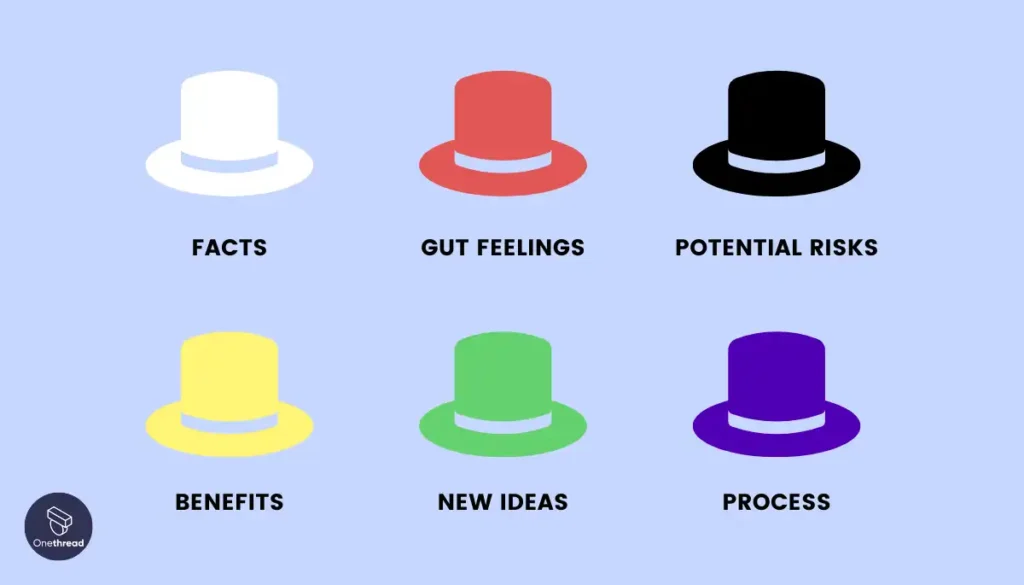
The Six Thinking Hats is a technique developed by Edward de Bono that encourages people to think about a problem from six different perspectives, each represented by a colored “thinking hat.”
The key benefit of this strategy is that it pushes team members to move outside their usual thinking style and consider new angles. This brings more diverse ideas and solutions to the table.
It works best for complex problems that require innovative solutions and when a team is stuck in an unproductive debate. The structured framework keeps the conversation flowing in a positive direction.
Limitations are that it requires training on the method itself and may feel unnatural at first. Team dynamics can also influence success – some members may dominate certain “hats” while others remain quiet.
A real-life example is a software company debating whether to build a new feature. The white hat focuses on facts, red on gut feelings, black on potential risks, yellow on benefits, green on new ideas, and blue on process. This exposes more balanced perspectives before deciding.
Onethread centralizes diverse stakeholder communication onto one platform, ensuring all voices are incorporated when evaluating project tradeoffs, just as problem-solving should consider multifaceted solutions.
Try Onethread
Experience Onethread full potential, with all its features unlocked. Sign up now to start your 14-day free trial!
16. Visualize the Problem (Draw it Out)
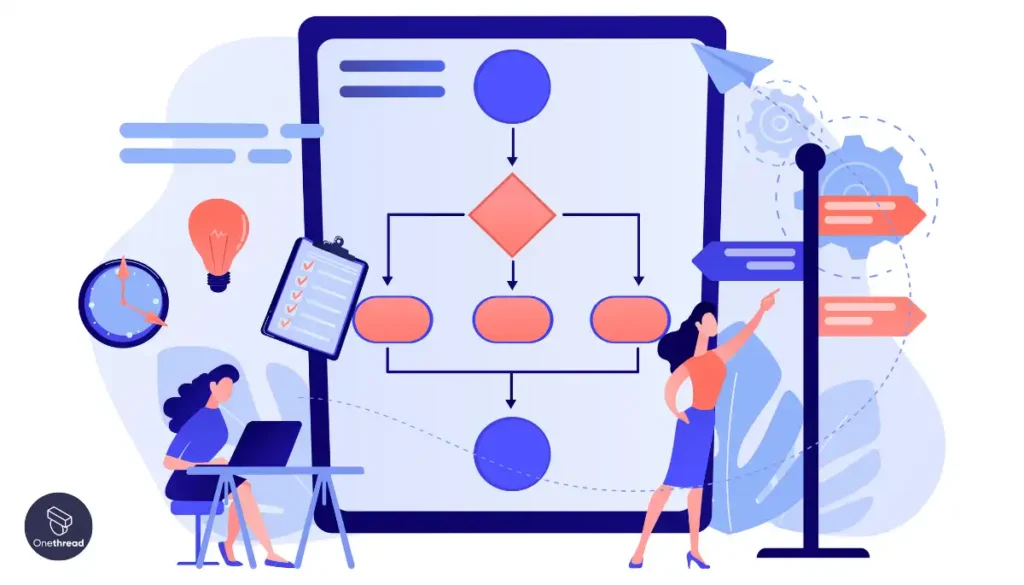
Drawing out a problem involves creating visual representations like diagrams, flowcharts, and maps to work through challenging issues.
This strategy is helpful when dealing with complex situations with lots of interconnected components. The visuals simplify the complexity so you can thoroughly understand the problem and all its nuances.
Key benefits are that it allows more stakeholders to get on the same page regarding root causes and it sparks new creative solutions as connections are made visually.
However, simple problems with few variables don’t require extensive diagrams. Additionally, some challenges are so multidimensional that fully capturing every aspect is difficult.
A real-life example would be mapping out all the possible causes leading to decreased client satisfaction at a law firm. An intricate fishbone diagram with branches for issues like service delivery, technology, facilities, culture, and vendor partnerships allows the team to trace problems back to their origins and brainstorm targeted fixes.
17. Follow a Step-by-Step Procedure (Algorithms)
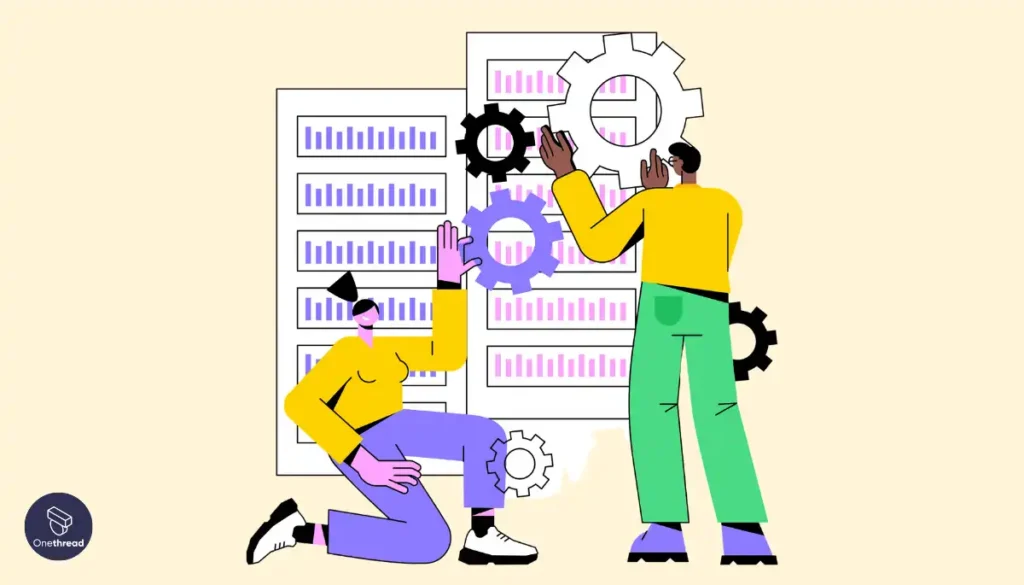
An algorithm is a predefined step-by-step process that is guaranteed to produce the correct solution if implemented properly.
Using algorithms is effective when facing problems that have clear, binary right and wrong answers. Algorithms work for mathematical calculations, computer code, manufacturing assembly lines, and scientific experiments.
Key benefits are consistency, accuracy, and efficiency. However, they require extensive upfront development and only apply to scenarios with strict parameters. Additionally, human error can lead to mistakes.
For example, crew members of fast food chains like McDonald’s follow specific algorithms for food prep – from grill times to ingredient amounts in sandwiches, to order fulfillment procedures. This ensures uniform quality and service across all locations. However, if a step is missed, errors occur.
The Problem-Solving Process
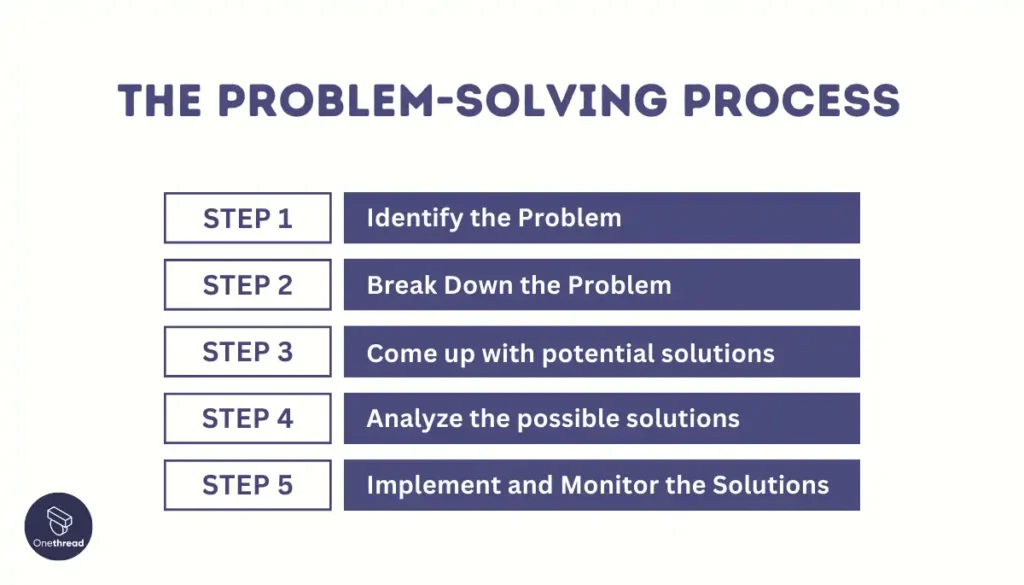
The problem-solving process typically includes defining the issue, analyzing details, creating solutions, weighing choices, acting, and reviewing results.
In the above, we have discussed several problem-solving strategies. For every problem-solving strategy, you have to follow these processes. Here’s a detailed step-by-step process of effective problem-solving:
Step 1: Identify the Problem
The problem-solving process starts with identifying the problem. This step involves understanding the issue’s nature, its scope, and its impact. Once the problem is clearly defined, it sets the foundation for finding effective solutions.
Identifying the problem is crucial. It means figuring out exactly what needs fixing. This involves looking at the situation closely, understanding what’s wrong, and knowing how it affects things. It’s about asking the right questions to get a clear picture of the issue.
This step is important because it guides the rest of the problem-solving process. Without a clear understanding of the problem, finding a solution is much harder. It’s like diagnosing an illness before treating it. Once the problem is identified accurately, you can move on to exploring possible solutions and deciding on the best course of action.
Step 2: Break Down the Problem
Breaking down the problem is a key step in the problem-solving process. It involves dividing the main issue into smaller, more manageable parts. This makes it easier to understand and tackle each component one by one.
After identifying the problem, the next step is to break it down. This means splitting the big issue into smaller pieces. It’s like solving a puzzle by handling one piece at a time.
By doing this, you can focus on each part without feeling overwhelmed. It also helps in identifying the root causes of the problem. Breaking down the problem allows for a clearer analysis and makes finding solutions more straightforward.
Each smaller problem can be addressed individually, leading to an effective resolution of the overall issue. This approach not only simplifies complex problems but also aids in developing a systematic plan to solve them.
Step 3: Come up with potential solutions
Coming up with potential solutions is the third step in the problem-solving process. It involves brainstorming various options to address the problem, considering creativity and feasibility to find the best approach.
After breaking down the problem, it’s time to think of ways to solve it. This stage is about brainstorming different solutions. You look at the smaller issues you’ve identified and start thinking of ways to fix them. This is where creativity comes in.
You want to come up with as many ideas as possible, no matter how out-of-the-box they seem. It’s important to consider all options and evaluate their pros and cons. This process allows you to gather a range of possible solutions.
Later, you can narrow these down to the most practical and effective ones. This step is crucial because it sets the stage for deciding on the best solution to implement. It’s about being open-minded and innovative to tackle the problem effectively.
Step 4: Analyze the possible solutions
Analyzing the possible solutions is the fourth step in the problem-solving process. It involves evaluating each proposed solution’s advantages and disadvantages to determine the most effective and feasible option.
After coming up with potential solutions, the next step is to analyze them. This means looking closely at each idea to see how well it solves the problem. You weigh the pros and cons of every solution.
Consider factors like cost, time, resources, and potential outcomes. This analysis helps in understanding the implications of each option. It’s about being critical and objective, ensuring that the chosen solution is not only effective but also practical.
This step is vital because it guides you towards making an informed decision. It involves comparing the solutions against each other and selecting the one that best addresses the problem.
By thoroughly analyzing the options, you can move forward with confidence, knowing you’ve chosen the best path to solve the issue.
Step 5: Implement and Monitor the Solutions
Implementing and monitoring the solutions is the final step in the problem-solving process. It involves putting the chosen solution into action and observing its effectiveness, making adjustments as necessary.
Once you’ve selected the best solution, it’s time to put it into practice. This step is about action. You implement the chosen solution and then keep an eye on how it works. Monitoring is crucial because it tells you if the solution is solving the problem as expected.
If things don’t go as planned, you may need to make some changes. This could mean tweaking the current solution or trying a different one. The goal is to ensure the problem is fully resolved.
This step is critical because it involves real-world application. It’s not just about planning; it’s about doing and adjusting based on results. By effectively implementing and monitoring the solutions, you can achieve the desired outcome and solve the problem successfully.
Why This Process is Important
Following a defined process to solve problems is important because it provides a systematic, structured approach instead of a haphazard one. Having clear steps guides logical thinking, analysis, and decision-making to increase effectiveness. Key reasons it helps are:
- Clear Direction: This process gives you a clear path to follow, which can make solving problems less overwhelming.
- Better Solutions: Thoughtful analysis of root causes, iterative testing of solutions, and learning orientation lead to addressing the heart of issues rather than just symptoms.
- Saves Time and Energy: Instead of guessing or trying random things, this process helps you find a solution more efficiently.
- Improves Skills: The more you use this process, the better you get at solving problems. It’s like practicing a sport. The more you practice, the better you play.
- Maximizes collaboration: Involving various stakeholders in the process enables broader inputs. Their communication and coordination are streamlined through organized brainstorming and evaluation.
- Provides consistency: Standard methodology across problems enables building institutional problem-solving capabilities over time. Patterns emerge on effective techniques to apply to different situations.
The problem-solving process is a powerful tool that can help us tackle any challenge we face. By following these steps, we can find solutions that work and learn important skills along the way.
Key Skills for Efficient Problem Solving
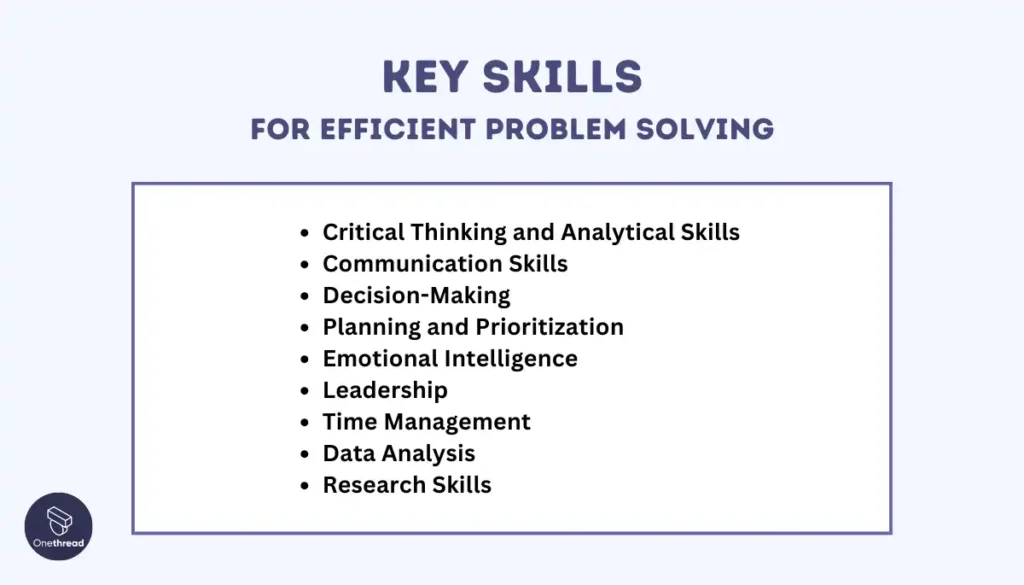
Efficient problem-solving requires breaking down issues logically, evaluating options, and implementing practical solutions.
Key skills include critical thinking to understand root causes, creativity to brainstorm innovative ideas, communication abilities to collaborate with others, and decision-making to select the best way forward. Staying adaptable, reflecting on outcomes, and applying lessons learned are also essential.
With practice, these capacities will lead to increased personal and team effectiveness in systematically addressing any problem.
Let’s explore the powers you need to become a problem-solving hero!
Critical Thinking and Analytical Skills
Critical thinking and analytical skills are vital for efficient problem-solving as they enable individuals to objectively evaluate information, identify key issues, and generate effective solutions.
These skills facilitate a deeper understanding of problems, leading to logical, well-reasoned decisions. By systematically breaking down complex issues and considering various perspectives, individuals can develop more innovative and practical solutions, enhancing their problem-solving effectiveness.
Communication Skills
Effective communication skills are essential for efficient problem-solving as they facilitate clear sharing of information, ensuring all team members understand the problem and proposed solutions.
These skills enable individuals to articulate issues, listen actively, and collaborate effectively, fostering a productive environment where diverse ideas can be exchanged and refined. By enhancing mutual understanding, communication skills contribute significantly to identifying and implementing the most viable solutions.
Decision-Making
Strong decision-making skills are crucial for efficient problem-solving, as they enable individuals to choose the best course of action from multiple alternatives.
These skills involve evaluating the potential outcomes of different solutions, considering the risks and benefits, and making informed choices. Effective decision-making leads to the implementation of solutions that are likely to resolve problems effectively, ensuring resources are used efficiently and goals are achieved.
Planning and Prioritization
Planning and prioritization are key for efficient problem-solving, ensuring resources are allocated effectively to address the most critical issues first. This approach helps in organizing tasks according to their urgency and impact, streamlining efforts towards achieving the desired outcome efficiently.
Emotional Intelligence
Emotional intelligence enhances problem-solving by allowing individuals to manage emotions, understand others, and navigate social complexities. It fosters a positive, collaborative environment, essential for generating creative solutions and making informed, empathetic decisions.
Leadership
Leadership skills drive efficient problem-solving by inspiring and guiding teams toward common goals. Effective leaders motivate their teams, foster innovation, and navigate challenges, ensuring collective efforts are focused and productive in addressing problems.
Time Management
Time management is crucial in problem-solving, enabling individuals to allocate appropriate time to each task. By efficiently managing time, one can ensure that critical problems are addressed promptly without neglecting other responsibilities.
Data Analysis
Data analysis skills are essential for problem-solving, as they enable individuals to sift through data, identify trends, and extract actionable insights. This analytical approach supports evidence-based decision-making, leading to more accurate and effective solutions.
Research Skills
Research skills are vital for efficient problem-solving, allowing individuals to gather relevant information, explore various solutions, and understand the problem’s context. This thorough exploration aids in developing well-informed, innovative solutions.
Becoming a great problem solver takes practice, but with these skills, you’re on your way to becoming a problem-solving hero.
How to Improve Your Problem-Solving Skills?
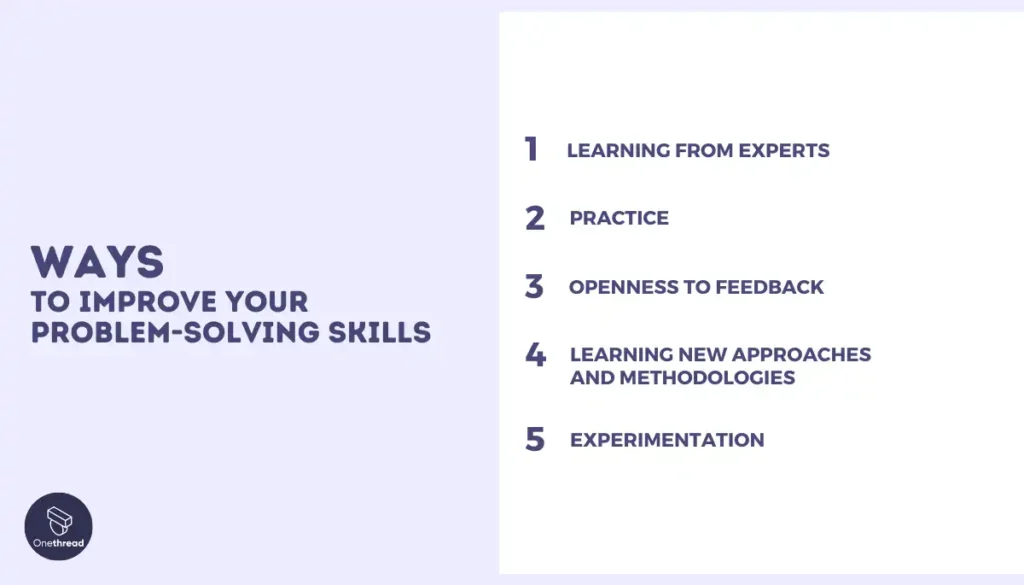
Improving your problem-solving skills can make you a master at overcoming challenges. Learn from experts, practice regularly, welcome feedback, try new methods, experiment, and study others’ success to become better.
Learning from Experts
Improving problem-solving skills by learning from experts involves seeking mentorship, attending workshops, and studying case studies. Experts provide insights and techniques that refine your approach, enhancing your ability to tackle complex problems effectively.
To enhance your problem-solving skills, learning from experts can be incredibly beneficial. Engaging with mentors, participating in specialized workshops, and analyzing case studies from seasoned professionals can offer valuable perspectives and strategies.
Experts share their experiences, mistakes, and successes, providing practical knowledge that can be applied to your own problem-solving process. This exposure not only broadens your understanding but also introduces you to diverse methods and approaches, enabling you to tackle challenges more efficiently and creatively.
Practice
Improving problem-solving skills through practice involves tackling a variety of challenges regularly. This hands-on approach helps in refining techniques and strategies, making you more adept at identifying and solving problems efficiently.
One of the most effective ways to enhance your problem-solving skills is through consistent practice. By engaging with different types of problems on a regular basis, you develop a deeper understanding of various strategies and how they can be applied.
This hands-on experience allows you to experiment with different approaches, learn from mistakes, and build confidence in your ability to tackle challenges.
Regular practice not only sharpens your analytical and critical thinking skills but also encourages adaptability and innovation, key components of effective problem-solving.
Openness to Feedback
Being open to feedback is like unlocking a secret level in a game. It helps you boost your problem-solving skills. Improving problem-solving skills through openness to feedback involves actively seeking and constructively responding to critiques.
This receptivity enables you to refine your strategies and approaches based on insights from others, leading to more effective solutions.
Learning New Approaches and Methodologies
Learning new approaches and methodologies is like adding new tools to your toolbox. It makes you a smarter problem-solver. Enhancing problem-solving skills by learning new approaches and methodologies involves staying updated with the latest trends and techniques in your field.
This continuous learning expands your toolkit, enabling innovative solutions and a fresh perspective on challenges.
Experimentation
Experimentation is like being a scientist of your own problems. It’s a powerful way to improve your problem-solving skills. Boosting problem-solving skills through experimentation means trying out different solutions to see what works best. This trial-and-error approach fosters creativity and can lead to unique solutions that wouldn’t have been considered otherwise.
Analyzing Competitors’ Success
Analyzing competitors’ success is like being a detective. It’s a smart way to boost your problem-solving skills. Improving problem-solving skills by analyzing competitors’ success involves studying their strategies and outcomes. Understanding what worked for them can provide valuable insights and inspire effective solutions for your own challenges.
Challenges in Problem-Solving
Facing obstacles when solving problems is common. Recognizing these barriers, like fear of failure or lack of information, helps us find ways around them for better solutions.
Fear of Failure
Fear of failure is like a big, scary monster that stops us from solving problems. It’s a challenge many face. Because being afraid of making mistakes can make us too scared to try new solutions.
How can we overcome this? First, understand that it’s okay to fail. Failure is not the opposite of success; it’s part of learning. Every time we fail, we discover one more way not to solve a problem, getting us closer to the right solution. Treat each attempt like an experiment. It’s not about failing; it’s about testing and learning.
Lack of Information
Lack of information is like trying to solve a puzzle with missing pieces. It’s a big challenge in problem-solving. Because without all the necessary details, finding a solution is much harder.
How can we fix this? Start by gathering as much information as you can. Ask questions, do research, or talk to experts. Think of yourself as a detective looking for clues. The more information you collect, the clearer the picture becomes. Then, use what you’ve learned to think of solutions.
Fixed Mindset
A fixed mindset is like being stuck in quicksand; it makes solving problems harder. It means thinking you can’t improve or learn new ways to solve issues.
How can we change this? First, believe that you can grow and learn from challenges. Think of your brain as a muscle that gets stronger every time you use it. When you face a problem, instead of saying “I can’t do this,” try thinking, “I can’t do this yet.” Look for lessons in every challenge and celebrate small wins.
Everyone starts somewhere, and mistakes are just steps on the path to getting better. By shifting to a growth mindset, you’ll see problems as opportunities to grow. Keep trying, keep learning, and your problem-solving skills will soar!
Jumping to Conclusions
Jumping to conclusions is like trying to finish a race before it starts. It’s a challenge in problem-solving. That means making a decision too quickly without looking at all the facts.
How can we avoid this? First, take a deep breath and slow down. Think about the problem like a puzzle. You need to see all the pieces before you know where they go. Ask questions, gather information, and consider different possibilities. Don’t choose the first solution that comes to mind. Instead, compare a few options.
Feeling Overwhelmed
Feeling overwhelmed is like being buried under a mountain of puzzles. It’s a big challenge in problem-solving. When we’re overwhelmed, everything seems too hard to handle.
How can we deal with this? Start by taking a step back. Breathe deeply and focus on one thing at a time. Break the big problem into smaller pieces, like sorting puzzle pieces by color. Tackle each small piece one by one. It’s also okay to ask for help. Sometimes, talking to someone else can give you a new perspective.
Confirmation Bias
Confirmation bias is like wearing glasses that only let you see what you want to see. It’s a challenge in problem-solving. Because it makes us focus only on information that agrees with what we already believe, ignoring anything that doesn’t.
How can we overcome this? First, be aware that you might be doing it. It’s like checking if your glasses are on right. Then, purposely look for information that challenges your views. It’s like trying on a different pair of glasses to see a new perspective. Ask questions and listen to answers, even if they don’t fit what you thought before.
Groupthink
Groupthink is like everyone in a group deciding to wear the same outfit without asking why. It’s a challenge in problem-solving. It means making decisions just because everyone else agrees, without really thinking it through.
How can we avoid this? First, encourage everyone in the group to share their ideas, even if they’re different. It’s like inviting everyone to show their unique style of clothes.
Listen to all opinions and discuss them. It’s okay to disagree; it helps us think of better solutions. Also, sometimes, ask someone outside the group for their thoughts. They might see something everyone in the group missed.
Overcoming obstacles in problem-solving requires patience, openness, and a willingness to learn from mistakes. By recognizing these barriers, we can develop strategies to navigate around them, leading to more effective and creative solutions.
FAQs
What are the most common problem-solving techniques?
The most common techniques include brainstorming, the 5 Whys, mind mapping, SWOT analysis, and using algorithms or heuristics. Each approach has its strengths, suitable for different types of problems.
What’s the best problem-solving strategy for every situation?
There’s no one-size-fits-all strategy. The best approach depends on the problem’s complexity, available resources, and time constraints. Combining multiple techniques often yields the best results.
How can I improve my problem-solving skills?
Improve your problem-solving skills by practicing regularly, learning from experts, staying open to feedback, and continuously updating your knowledge on new approaches and methodologies.
Are there any tools or resources to help with problem-solving?
Yes, tools like mind mapping software, online courses on critical thinking, and books on problem-solving techniques can be very helpful. Joining forums or groups focused on problem-solving can also provide support and insights.
What are some common mistakes people make when solving problems?
Common mistakes include jumping to conclusions without fully understanding the problem, ignoring valuable feedback, sticking to familiar solutions without considering alternatives, and not breaking down complex problems into manageable parts.
Final Words
Mastering problem-solving strategies equips us with the tools to tackle challenges across all areas of life. By understanding and applying these techniques, embracing a growth mindset, and learning from both successes and obstacles, we can transform problems into opportunities for growth. Continuously improving these skills ensures we’re prepared to face and solve future challenges more effectively.
